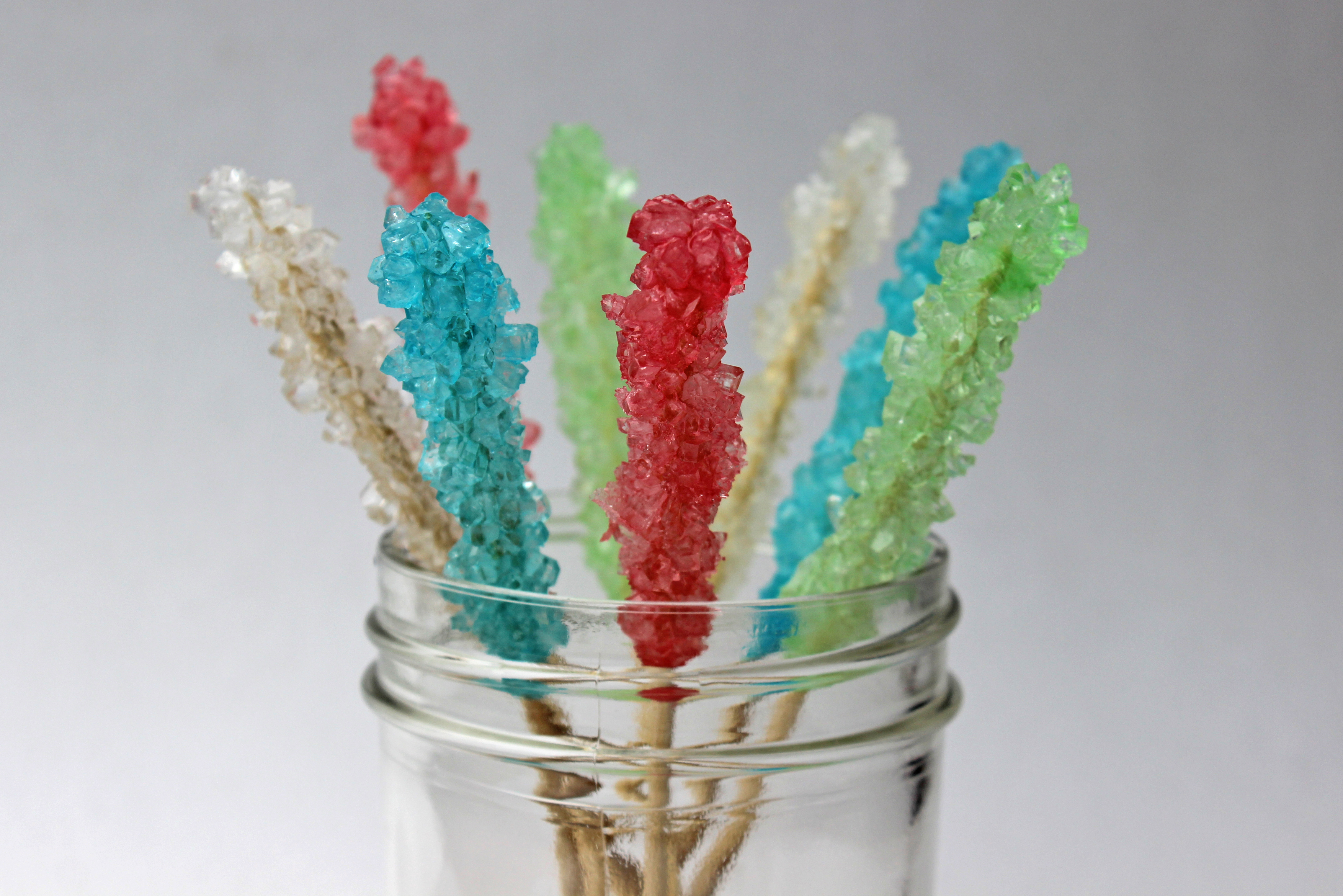Directions (What we did):
-
- We measured 100 ml of hot liquid water in a beaker.
- About 350 g of sugar was put in the hot water.
- We then stirred the water until the sugar dissolved – until the water became a slightly thick solution.
- A drop of red food coloring was added to the solution, although this was optional.
- The solution was poured into a cup.
- A stick was fastened in the middle, not touching the bottom, and was then left to rest and cool.
- The same process was repeated, but a fleck of Kool Aid powder was incorporated into the solution.
Report/Response:
Question: How does a sugar solution turn into rock candy?
*This is a hypothesis, everything said below is probable to be disproved.

The supposed result of the Rock Candy experiment is explanatory given its name; candy that’s firm as to be licked rather than broken or masticated. In usual cases of solutions, molecules of the solute disintegrate in the process of dissolving as to be attracted and bonded with molecules of the solvent, comprising the solution. The case of rock candy is probably homogeneous, sugar is the solute and liquid water is the solvent. In the experiment, the solution was slightly thick. It might’ve been caused by caramelization of the sugar, when sugar turns somewhat fluid, due to the hot liquid water when it dissolved. A thought is that when the solution rests and cools, the compounds of water and sugar has a chance of coming into contact with the item fixed in the middle of the cup (stick, string, etc.) and when it does, the compounds get stuck there. Gradually, more compounds run into the stick and the sugar molecules stack up, slowly forming sugar crystals. The probability of this same process happening to the walls of the object containing the solution is not unlikely either. So after a period of time, the surface of the solution – or the whole solution – might be crystallized.
